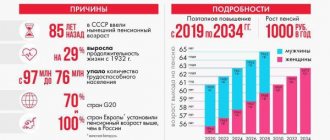The aging of the working population is a common problem in developed countries. That is why the system of joint pension provision, invented at the end of the 19th century, has ceased to meet new conditions, when the number of insurance premium payers is becoming smaller and there are more and more recipients of state benefits. One of the ways out of this situation is the introduction of a personal savings system. The Estonian authorities adopted the same principle as a basis: now pensions in Estonia are formed, among other things, through the mandatory funded part.
General characteristics
Estonia has not completely abandoned the solidary system of pension payments. As a result of the reforms carried out, the country’s pension system consists of three stages:
- Compulsory state insurance. Formed from funds received from the payment of social tax: 33% of the wage fund of officially registered employees. From 16 to 20% of the transferred contributions are allocated to current payments to modern pensioners. At the expense of jointly accumulated funds, state benefits are paid to disabled people, people who have lost their breadwinner, old-age pensions for permanent residents of Estonia and foreigners staying in the country with a residence permit, as well as the national pension in Estonia (provided for those who do not have the opportunity to confirm their insurance period).
- Mandatory savings part. Additional personalized contributions are formed from two sources: 2% of the accrued salary is paid by the future pensioner himself, 4% is paid additionally by the employer (as part of 33% social tax). Not everyone can join this system automatically. The main condition is that the payer cannot be older than 1983, the rest had to declare their desire to pay contributions until 2021.
- Additional (voluntary) funded part. Until 2021, a person born between 1942 and 1982 could still join in paying mandatory funded contributions. After October 31, 2021, this option is no longer available, so those who do not want to be satisfied with the state pension (it is no more than 40% of average earnings) must pay additional savings pension contributions on their own. Participation in the third pillar of pension insurance allows you to increase the size of your future pension to 65–70% of your current salary.
The Estonian pension system is based on several regulations:
- “On state pension insurance” - ;
- “On preferential old-age pensions” - ;
- “On funded pensions” – ;
- “On social tax” - .
From the important point: from January 1, 2021, the country began the process of gradually increasing the retirement age (by 2021 it will increase to 65 years), various types of benefits are used - three stages. Early and deferred pensions are also applied, and delayed retirement is financially encouraged.
Types of benefits
To maintain social stability, the state must provide pensions to the disabled part of the population who have not reached retirement age and are physically unable to pay insurance premiums.
Types of benefits, depending on the circumstances of their assignment, are divided into several categories.
| Pension type | Administrative organization | Type of payment |
| State (1st level) | · old-age pension, including early, deferred and preferential; | |
| · loss of a breadwinner; | ||
| · for incapacity (disability); | ||
| · national pension (if a person has lived in the country for at least 5 years, but has no insurance coverage); | ||
| · parental allowance for raising children (for each child born since December 31, 1980) | ||
| Cumulative (2nd stage) | (mandatory in Estonia) | 6% of accrued wages are accumulated monthly in the account of the future pensioner, opened in one of the non-state pension funds. |
| Money can only be received after receiving the right to an old-age pension | ||
| Additional storage part (3rd stage) | Insurance companies and banks of the employee's choice | Accumulated premiums and earned premiums can be paid at any time starting at age 55. The payment can be monthly or issued one-time (at the client’s request). |
Retirement age
Most European countries are forced to gradually raise the retirement age.
The article “Pension in the Republic of Latvia” will tell you how this process happens, for example, in a neighboring country.
In Estonia, this process began on January 1, 2021. The increase step is 3 months, and the scheme is planned in such a way that by 2021 the age limit will rise to 65 years.
The changes will affect those born in 1953 and later.
| Year of birth of the future pensioner | Pension age |
| 1953 | 63 years old |
| 1954 | 63 years and 3 months |
| 1955 | 63 years and 6 months |
| 1956 | 63 years and 9 months |
| 1957 | 64 years old |
| 1958 | 64 years and 3 months |
| 1959 | 64 years and 6 months |
| 1960 | 64 years and 9 months |
| 1961 and older | 65 years old |
Prospects
In the future, the Estonian authorities expect to significantly change the system. They expect to establish such payments so that pensioners do not need anything. To achieve this, it is proposed to establish a higher pension income.
In particular, it is proposed to abolish the ability to independently determine the time of retirement, freeze and make partial payments.
At the same time, the retirement age will be correlated with the projected life expectancy; it is possible that it will reach 70 years. The changes will not affect current pensioners and savings units.
Early and deferred retirement
A full age pension is only available to those who have officially worked and paid insurance premiums in Estonia for at least 15 years. The assignment of an old-age pension cannot be canceled, even if the pensioner continues to work.
In Estonia, it is possible to take a well-deserved rest before reaching
retirement age. Early retirement comes three years ahead of schedule. Those who meet the following conditions can enter it:
- lack of official employment or self-employment with income generation;
- there are three years or less left before reaching retirement age;
- The insurance period accumulated in Estonia is 15 years or more.
In case of early termination of employment, the benefit amount is reduced by 0.4% for each missed month (even incomplete). Thus, for a person who declared a desire to receive a pension 11 months earlier, the monthly pension will be cut by 4.4%.
Deferred retirement (applying for benefits later than reaching the legal age) is encouraged by the authorities, as it reduces the burden on national funds. As compensation, the state offers a proportional increase in the amount of monthly payments.
If a person postpones the date of retirement, the old-age pension in Estonia will increase by 0.9% of the originally assigned amount for each month of deferment. For example, for 2 years of work after reaching retirement age (provided that the length of service is sufficient for full payment), the pension amount will increase by 21.6%.
In addition, Estonia has retained the right to early retirement for persons employed in industries with hazardous and hazardous working conditions. Retirement in Estonia can be postponed to an earlier date, which depends on the area of employment and the employee’s profession:
- specialists listed in list No. 1 of ;
- for 5 years - representatives from list No. 2 of the same Resolution;
- regardless of age, but based on the accumulation of the required professional experience, if the person is employed in one of the positions listed in the Law “On Long Service Pensions” ( ).
| Employment type | Minimum work experience (total), years | Minimum experience in the profession, years | Retirement date |
| List No. 1 | 20 | 10 | 10 years ahead of schedule |
| List No. 2 | 25 | 12.5 | 5 years before reaching retirement age |
| Work in the police, security organizations and prison | 25 | 12.5 | Regardless of age, if the conditions for length of service are met |
| Mining workers | 25 years for above-ground work, 20 years for underground | ||
| Service on sea and river vessels | 25 years of work in the navy or river fleet | ||
| Employment in the textile industry | 25 years of work in the profession | 5 years earlier than the general retirement age | |
| Workers in education and organizations caring for the sick and disabled | 25 years of teaching experience or 15 years of work in special institutions | Regardless of age, if the conditions for length of service are met | |
| Art workers | 20 years for ballerinas, dancers and circus performers, 25 years for soloists, choir singers and puppeteers | ||
| HIV-infected healthcare workers | Upon the fact of infection, if it occurred as a result of performing professional duties | ||
| Public transport workers | 25 years, provided that the employee worked as a bus, tram or trolleybus driver in a city with a population of 400,000 people or more. | 5 years earlier than the established retirement age | |
What is the pension in Estonia and the specifics of calculating the amount of payments
Currently, the number of pensioners in the country reaches approximately 400 thousand. After a person has worked for 15 years and reached a certain age category, he has the opportunity to receive a national type payment. The size is 223 euros. If a person has no income, then the amount is 159 euros, this figure is minimal.
Having 30 years of experience - 302 euros, if 40 years of experience - 354 euros. In a situation where you have worked for 44 years – 375 euros. Each annual period the state increases the amount of these payments .
The average pension in 2021 will increase by 7%. At the same time, the increase is planned for April. The benefit will be equal to 481 euros. A recalculation is made every year.
Benefit calculation procedure
Periods when a specialist worked part-time or part-time are not counted towards professional experience. Payments stop if the specialist decides to resume work in one of the preferential industries.
Taking into account the reforms carried out, a working person should now think about what kind of pension in Estonia will be paid to him after completing his professional career. The Law “On State Pensions” determines that the amount of old-age accrual consists of three parts:
- Basic (basic) - fixed for all categories, taking into account annual indexation from April 1, 2021, amounts to 191,649 euros per month.
- Proportional - depends on the accumulated total length of service until December 31, 1998, multiplied by the cost of the insurance year: the number of years worked before 1999 is multiplied by the annual assessment rate - from April 1, 2021 it will be 6,627 euros for each year of work.
- Insurance – the number of years of payment of social tax, multiplied by the current annual assessment (in 2021 – 6,627 euros).
The Social Insurance Department has developed it for those who want to make a calculation in advance and find out how much their future pension will be.
The benefit accrued upon retirement is subject to annual indexation. For example, the average pension in Estonia in 2021 has increased by almost 7% since April 1 (from 447 to 481 euros per month). The national pension from April 2021 is 205.21 euros.
The funded portion is paid in accordance with the provisions of the agreement signed with the pension fund or insurance company. This can be a pension agreement with a lifetime annuity or a payment for a certain period, when the amount paid during life is divided by the number of years of survival (the minimum period is 10 years) and added to the state benefit.
If the accumulated amount is less than the national pension multiplied by 10 (if a pension is assigned in 2021, this is 2052.10 euros), then the applicant can request a lump sum payment.
Funds transferred to the pension fund as part of participation in the second and third pillars of insurance are legally protected from the risks of bankruptcy of the organization or termination of its activities for other reasons.
The amount of shares of 10,000 euros is guaranteed to be returned, and the part exceeding this amount will be refunded using a coefficient of 0.9. That is, from a share of 20,000 euros, the investor will be returned 10,000 euros guaranteed and 9,000 euros using a reduction factor.
Features of pension calculation
The total amount of the pension consists of a basic amount of approximately 160 euros, a bonus for length of service until the end of 1998, as well as payments from the insurance share. The last component requires separate consideration, since there are a number of factors taken into account when calculating it.
Among them:
- compulsory service in the armed forces;
- work experience;
- availability of education;
- maternity leave or temporary disability;
- the amount of taxes paid before 1999.
Such insurance payments are calculated individually and differ significantly for each resident of Estonia. Each year of service increases the future pension by 5.7 euros, which must be taken into account when submitting documents.
There are special calculators for calculating the amount of contributions to a funded pension
It is worth remembering government measures designed to improve the well-being of local pensioners. Every year, authorities recalculate pensions, and pension payments increase. The size of the adjustment depends on the annual increase in prices, as well as the increase in social tax received by the state.
Watch the video: Pension system in Estonia.










